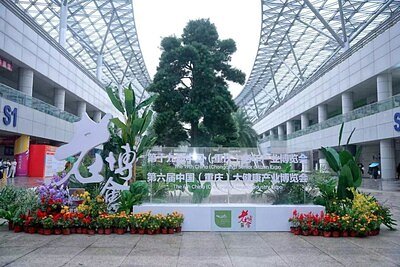
China's Silver Economy Expo Faces Scrutiny Amid Conflicting Reports
A major elderly care expo in Chongqing reports billions in potential deals, but a dissenting report raises questions about actual participation and industry momentum. Is China’s silver economy truly booming?
China’s Silver Economy Expo Faces Scrutiny Amid Conflicting Reports
Chongqing, China – A recent exhibition aimed at showcasing innovation and investment in China’s rapidly aging population has become the subject of scrutiny following conflicting reports regarding its success. While organizers of the 19th China (Chongqing) Senior Citizen Expo tout billions of yuan in potential contracts, a separate report paints a drastically different picture, raising concerns about the actual health and momentum of the country’s burgeoning silver economy.
China’s aging population presents both a challenge and an opportunity. With over 280 million people aged 60 or older, the demand for elderly care services, assistive technologies, and specialized healthcare is soaring. The government has identified the silver economy as a strategic priority, offering policy support and funding to foster innovation and growth. Projections indicate the market could reach trillions of yuan in the coming years.
According to a press release issued by the exhibition’s host, Chongqing Youchuang Dongfang Exhibition Co., Ltd., the event attracted over 600 companies from more than 10 countries, fostering collaboration and generating nearly 1 billion yuan (approximately $138 million USD) in potential contracts. Organizers claim the expo showcased the latest advancements in smart elderly care, rehabilitation technologies, and long-term care solutions.
“The expo provided a valuable platform for businesses to connect with potential partners and investors, driving innovation and expanding access to much-needed services for our aging population,” said an anonymous spokesperson for the event organizer. “We are confident that the positive momentum generated will translate into tangible benefits for seniors across China.”
However, a dissenting report published by Laotian Times – and seemingly ignored by most mainstream business news outlets – casts a shadow over these optimistic claims. The report alleges that actual participation was significantly lower than advertised, with fewer than 50 exhibiting companies present. It further claims that on-site sales were minimal, totaling less than 2 million yuan, and that potential contracts discussed amounted to only around 10 million yuan – a fraction of the figure cited by the organizers.
“The discrepancies between the official reports and what we observed on the ground are concerning,” said an anonymous industry analyst who attended the event. “It’s possible that the reported figures are inflated or that the potential contracts are largely speculative, lacking concrete commitments.”
The conflicting reports raise questions about the transparency and accuracy of reporting within China’s burgeoning silver economy. While the government has actively promoted investment in the sector, concerns remain about the actual implementation of policies and the effectiveness of initiatives.
“There is a lot of hype surrounding the silver economy in China, but it’s important to separate the reality from the rhetoric,” said an anonymous academic specializing in demographic trends. “The demand for elderly care services is undoubtedly growing, but translating that demand into sustainable business models and scalable solutions remains a significant challenge.”
Beyond the immediate concerns surrounding the Chongqing expo, several key trends are shaping the future of China’s silver economy. The growing adoption of smart technologies is revolutionizing elderly care, with AI-powered solutions, wearable devices, and remote monitoring systems gaining traction. Long-term care insurance is also expanding, although coverage remains limited and access uneven.
“The integration of technology into elderly care is crucial for addressing the challenges posed by an aging population,” said an anonymous technology entrepreneur specializing in healthcare solutions. “However, it’s important to ensure that these technologies are accessible and affordable for all seniors, regardless of their socioeconomic status.”
Furthermore, international companies are increasingly eyeing China’s silver economy as a lucrative market. Companies specializing in hearing care, biotechnology, and assistive technologies are actively seeking partnerships and investment opportunities within the country.
“China’s aging population presents a unique opportunity for international companies to expand their reach and introduce innovative solutions,” said an anonymous representative from a foreign healthcare firm. “However, navigating the regulatory landscape and establishing strong local partnerships are essential for success.”
The conflicting reports surrounding the Chongqing expo underscore the need for greater transparency and independent verification of claims within China’s burgeoning silver economy. While the potential for growth is undeniable, ensuring that the benefits are realized by seniors and that the sector develops sustainably requires a critical and objective assessment of its true health and momentum.
Whether the Chongqing expo represents a genuine showcase of innovation and investment or a case of inflated claims remains to be seen. However, the discrepancies surrounding the event serve as a cautionary tale, highlighting the importance of critical thinking and independent verification in a rapidly evolving and often opaque market. The future of China’s silver economy depends on building a foundation of trust, transparency, and sustainable growth, ensuring that the needs of its aging population are met with genuine and effective solutions.
📝 This article is still being updated
Are you a relevant expert who could contribute your opinion or insights to this article? We'd love to hear from you. We will give you full credit for your contribution.
Contribute Your Expertise →